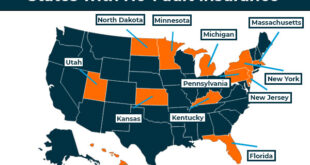Small Personal Loans: Getting the Right Loan for You Small personal loans offer a quick and flexible way to cover unexpected expenses, make a small purchase, or consolidate debt. With many options and lenders available, choosing the best loan can be confusing. This guide will provide everything you need to understand about small personal loans, covering eligibility, application steps, common uses, and tips for getting the best rates.
Understanding Small Personal Loans
Small personal loans are generally unsecured, meaning no collateral is required, and they typically range from $500 to $5,000. These loans are ideal for short-term needs like medical expenses, car repairs, or home improvements.
Benefits of Small Personal Loans
- Quick Access to Funds: Many lenders offer same-day approval.
- Flexible Use: You can use the funds for almost any purpose.
- Fixed Interest Rates: Most loans have fixed rates, making monthly budgeting easier.
How to Apply for a Small Personal Loan
- Check Your Credit Score: Lenders consider your credit score to determine your loan eligibility and interest rate.
- Research Lenders: Compare lenders to find the best rate and terms.
- Gather Required Documents: You’ll need ID, proof of income, and possibly bank statements.
- Apply Online or In-Person: Submit your application with accurate information.
- Review Loan Terms: Before accepting, understand the interest rate, repayment period, and fees.
- Receive Funds: Once approved, the funds are often deposited within one to two business days.
Tips to Secure a Small Personal Loan
- Improve Your Credit Score: A higher credit score can qualify you for lower interest rates.
- Compare Loan Offers: Use online tools to compare APRs, fees, and terms.
- Choose a Shorter Loan Term: Shorter terms may lower the overall interest paid.
- Avoid Payday Loans: These loans often have high fees and short repayment windows.
- Check for Prepayment Penalties: Some lenders charge fees if you repay early.
- Opt for a Fixed Rate: Fixed rates provide stability, as the rate won’t increase.
- Borrow Only What You Need: Larger amounts mean higher monthly payments.
- Consider a Credit Union: Credit unions may offer lower interest rates than traditional banks.
- Automate Payments: Automating can help avoid late fees.
- Stay Within Budget: Ensure the monthly payment fits within your budget.
Frequently Asked Questions (FAQs)
- What is a small personal loan? A small personal loan is typically between $500 to $5,000 and can be used for various personal needs.
- How long does it take to get approved? Some lenders offer instant approvals, while others may take up to a few days.
- Do I need good credit? Credit requirements vary, but a higher credit score generally results in better rates.
- What is the interest rate range? Rates vary but typically range from 6% to 36%, depending on your credit.
- Are small personal loans unsecured? Most small personal loans are unsecured, meaning they don’t require collateral.
- Can I use a small loan to consolidate debt? Yes, consolidating debt is a common use for small personal loans.
- What happens if I miss a payment? Missing payments can lead to fees, a damaged credit score, or legal action.
- Can I pay off my loan early? Yes, but check if your lender charges a prepayment penalty.
- How is a small loan different from a payday loan? Small personal loans usually have lower interest rates and longer terms compared to payday loans.
- Where can I apply for a small personal loan? You can apply through banks, credit unions, or online lenders.
Conclusion
Small personal loans provide a practical financial solution when you need quick access to cash. By researching and comparing lenders, you can secure a loan with terms and rates that suit your financial goals. Whether you’re consolidating debt, handling an emergency expense, or funding a small project, a well-chosen personal loan can be an excellent choice. Just remember to plan your budget and repay responsibly to maintain financial health.
 Gerbang Finance
Gerbang Finance

